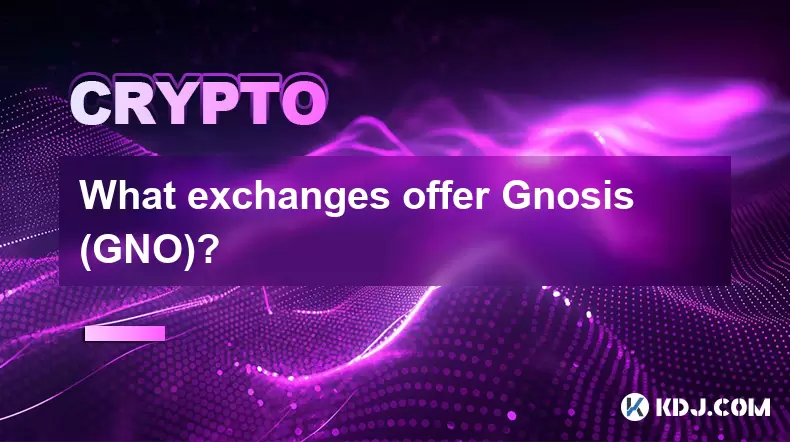-
 Bitcoin
Bitcoin $119000
-2.21% -
 Ethereum
Ethereum $4315
1.01% -
 XRP
XRP $3.151
-3.11% -
 Tether USDt
Tether USDt $0.0000
0.00% -
 BNB
BNB $808.5
-0.71% -
 Solana
Solana $175.8
-4.21% -
 USDC
USDC $0.9999
0.00% -
 Dogecoin
Dogecoin $0.2250
-3.92% -
 TRON
TRON $0.3469
1.77% -
 Cardano
Cardano $0.7818
-3.81% -
 Chainlink
Chainlink $21.47
-2.10% -
 Hyperliquid
Hyperliquid $43.30
-6.81% -
 Stellar
Stellar $0.4370
-2.84% -
 Sui
Sui $3.682
-4.40% -
 Bitcoin Cash
Bitcoin Cash $590.8
2.67% -
 Hedera
Hedera $0.2484
-5.20% -
 Ethena USDe
Ethena USDe $1.001
0.00% -
 Avalanche
Avalanche $23.10
-4.29% -
 Litecoin
Litecoin $119.2
-3.96% -
 Toncoin
Toncoin $3.409
0.90% -
 UNUS SED LEO
UNUS SED LEO $9.016
-1.29% -
 Shiba Inu
Shiba Inu $0.00001304
-3.82% -
 Uniswap
Uniswap $11.18
1.33% -
 Polkadot
Polkadot $3.913
-3.51% -
 Cronos
Cronos $0.1672
-3.08% -
 Dai
Dai $1.000
0.02% -
 Ethena
Ethena $0.7899
-4.70% -
 Bitget Token
Bitget Token $4.400
-1.23% -
 Pepe
Pepe $0.00001132
-5.93% -
 Monero
Monero $257.9
-6.44%
How to use Bitcoin hedging strategy? Can it reduce risk?
Bitcoin hedging strategies like futures, options, inverse ETFs, and stablecoins can help manage risk in the volatile crypto market, potentially reducing losses while maintaining upside potential.
May 19, 2025 at 10:35 pm

Using a Bitcoin hedging strategy can be an effective way to manage risk in the volatile cryptocurrency market. Hedging involves taking an offsetting position in a related asset to reduce the risk of adverse price movements. In the context of Bitcoin, this strategy can help investors protect their investments from significant losses while still participating in potential gains. This article will explore various Bitcoin hedging strategies, their implementation, and their potential to reduce risk.
Understanding Bitcoin Hedging
Bitcoin hedging is a risk management strategy that aims to offset potential losses in Bitcoin by taking positions in other financial instruments. The primary goal is to reduce the impact of Bitcoin's price volatility on an investor's portfolio. By using hedging strategies, investors can potentially limit their downside risk while still maintaining exposure to Bitcoin's upside potential.
Types of Bitcoin Hedging Strategies
There are several types of Bitcoin hedging strategies that investors can employ. Each strategy has its own set of advantages and considerations, depending on the investor's risk tolerance and market outlook.
1. Futures Contracts
Futures contracts are agreements to buy or sell an asset at a predetermined price on a specific future date. In the context of Bitcoin, investors can use futures contracts to hedge against price fluctuations.
- To hedge with Bitcoin futures, an investor who holds Bitcoin can sell Bitcoin futures contracts. If the price of Bitcoin falls, the loss on the Bitcoin holdings will be offset by gains on the futures contracts.
- Conversely, if the investor expects the price of Bitcoin to rise, they can buy Bitcoin futures contracts to lock in a future purchase price.
2. Options Contracts
Options contracts give the holder the right, but not the obligation, to buy or sell an asset at a specified price within a certain time frame. Options can be used to hedge Bitcoin positions in various ways.
- Call options allow investors to buy Bitcoin at a predetermined price. If the price of Bitcoin rises above the strike price, the investor can exercise the option and buy Bitcoin at a lower price.
- Put options allow investors to sell Bitcoin at a predetermined price. If the price of Bitcoin falls below the strike price, the investor can exercise the option and sell Bitcoin at a higher price.
3. Inverse ETFs
Inverse ETFs are exchange-traded funds designed to perform inversely to the performance of an underlying asset. In the case of Bitcoin, inverse ETFs can be used to hedge against price declines.
- To hedge with an inverse Bitcoin ETF, an investor can buy shares of the ETF. If the price of Bitcoin falls, the value of the inverse ETF will rise, offsetting the losses on the Bitcoin holdings.
4. Stablecoins
Stablecoins are cryptocurrencies pegged to stable assets like the US dollar. They can be used as a hedge against Bitcoin's volatility.
- To hedge with stablecoins, an investor can convert a portion of their Bitcoin holdings into stablecoins. If the price of Bitcoin falls, the stablecoin holdings will retain their value, providing a cushion against losses.
Implementing a Bitcoin Hedging Strategy
Implementing a Bitcoin hedging strategy requires careful planning and execution. Here are the steps to implement some of the most common hedging strategies:
Using Futures Contracts
- Open a futures trading account with a reputable exchange that offers Bitcoin futures, such as the Chicago Mercantile Exchange (CME) or the Binance Futures platform.
- Determine the size of the hedge based on the amount of Bitcoin you want to hedge and the current market conditions.
- Sell Bitcoin futures contracts to hedge against a potential price decline. The number of contracts should be calculated based on the size of your Bitcoin holdings and the contract specifications.
- Monitor the market and adjust your hedge as necessary. If the price of Bitcoin moves significantly, you may need to roll over your futures contracts to maintain the hedge.
Using Options Contracts
- Open an options trading account with a platform that offers Bitcoin options, such as Deribit or LedgerX.
- Choose the appropriate options contracts based on your hedging goals. For example, if you want to hedge against a price decline, you would buy put options.
- Calculate the number of options contracts needed to hedge your Bitcoin holdings. This will depend on the size of your holdings and the contract specifications.
- Execute the options trade and monitor the market. If the price of Bitcoin moves significantly, you may need to adjust your options positions to maintain the hedge.
Using Inverse ETFs
- Research and select an inverse Bitcoin ETF that aligns with your hedging goals. Examples include the ProShares Short Bitcoin Strategy ETF (BITI) and the Direxion Daily Bitcoin Bear 1x Shares (BITD).
- Open a brokerage account that allows trading of ETFs.
- Purchase shares of the inverse ETF to hedge against a potential decline in Bitcoin's price. The number of shares should be calculated based on the size of your Bitcoin holdings and the ETF's performance.
- Monitor the market and adjust your ETF holdings as necessary. If the price of Bitcoin moves significantly, you may need to buy or sell additional shares to maintain the hedge.
Using Stablecoins
- Choose a stablecoin that is widely used and trusted, such as Tether (USDT) or USD Coin (USDC).
- Convert a portion of your Bitcoin holdings into the chosen stablecoin. The amount to convert will depend on your risk tolerance and hedging goals.
- Store the stablecoins in a secure wallet or exchange account.
- Monitor the market and adjust your stablecoin holdings as necessary. If the price of Bitcoin moves significantly, you may need to convert more or less of your holdings into stablecoins to maintain the hedge.
Can Bitcoin Hedging Reduce Risk?
Bitcoin hedging can indeed reduce risk by providing a way to offset potential losses in Bitcoin holdings. By using hedging strategies, investors can limit their exposure to Bitcoin's price volatility and protect their portfolios from significant downturns. However, it's important to understand that hedging is not a foolproof method and comes with its own set of risks and costs.
- Hedging costs: Implementing a hedging strategy often involves transaction fees, margin requirements, and other costs that can eat into potential profits.
- Basis risk: The relationship between the hedging instrument and Bitcoin may not be perfect, leading to potential mismatches in performance.
- Opportunity cost: By hedging, investors may miss out on potential gains if the price of Bitcoin moves in their favor.
Despite these considerations, Bitcoin hedging can be a valuable tool for managing risk in a volatile market. By carefully selecting and implementing the right hedging strategy, investors can potentially reduce their exposure to downside risk while still participating in Bitcoin's upside potential.
Frequently Asked Questions
Q: Can I hedge Bitcoin without using derivatives?
A: Yes, you can hedge Bitcoin without using derivatives by converting a portion of your holdings into stablecoins. This strategy involves less complexity and risk compared to using futures or options contracts.
Q: How often should I adjust my Bitcoin hedge?
A: The frequency of adjusting your Bitcoin hedge depends on market conditions and your risk tolerance. It's generally recommended to monitor the market regularly and adjust your hedge as necessary to maintain the desired level of risk protection.
Q: Are there any tax implications of using Bitcoin hedging strategies?
A: Yes, using Bitcoin hedging strategies can have tax implications. Depending on your jurisdiction, gains or losses from hedging instruments may be subject to capital gains tax or other taxes. It's advisable to consult with a tax professional to understand the specific implications for your situation.
Q: Can institutional investors use Bitcoin hedging strategies?
A: Yes, institutional investors can use Bitcoin hedging strategies to manage their exposure to the cryptocurrency market. Many institutional investors already use derivatives and other financial instruments to hedge their Bitcoin holdings and manage risk.
Disclaimer:info@kdj.com
The information provided is not trading advice. kdj.com does not assume any responsibility for any investments made based on the information provided in this article. Cryptocurrencies are highly volatile and it is highly recommended that you invest with caution after thorough research!
If you believe that the content used on this website infringes your copyright, please contact us immediately (info@kdj.com) and we will delete it promptly.
- Arc Blockchain: Circle's Layer-1 Play Amidst $428 Million Loss
- 2025-08-12 20:30:13
- XRP Price: Riding the Bull Cycle Wave or Hitting a Wall?
- 2025-08-12 20:50:12
- Cloud Mining in 2025: Chasing Passive Income and High Returns
- 2025-08-12 20:30:13
- Solana Price, Meme Coins, and 100x Gains: What's the Hype?
- 2025-08-12 20:50:12
- Japan, Bitcoin, and Treasuries: A New Era of Corporate Finance?
- 2025-08-12 18:30:12
- Bitcoin Bull Market: Decoding the Indicators for the Next Big Move
- 2025-08-12 18:30:12
Related knowledge

How to purchase Aragon (ANT)?
Aug 09,2025 at 11:56pm
Understanding Aragon (ANT) and Its PurposeAragon (ANT) is a decentralized governance token that powers the Aragon Network, a platform built on the Eth...

Where to trade Band Protocol (BAND)?
Aug 10,2025 at 11:36pm
Understanding the Role of Private Keys in Cryptocurrency WalletsIn the world of cryptocurrency, a private key is one of the most critical components o...

What is the most secure way to buy Ocean Protocol (OCEAN)?
Aug 10,2025 at 01:01pm
Understanding Ocean Protocol (OCEAN) and Its EcosystemOcean Protocol (OCEAN) is a decentralized data exchange platform built on blockchain technology,...

How to invest in Kyber Network Crystal v2 (KNC)?
Aug 12,2025 at 05:21pm
Understanding Kyber Network Crystal v2 (KNC)Kyber Network is a decentralized liquidity hub built on the Ethereum blockchain that enables instant token...

Where can I buy UMA (UMA)?
Aug 07,2025 at 06:42pm
Understanding UMA and Its Role in Decentralized FinanceUMA (Universal Market Access) is an Ethereum-based decentralized finance (DeFi) protocol design...

What exchanges offer Gnosis (GNO)?
Aug 12,2025 at 12:42pm
Overview of Gnosis (GNO) and Its Role in the Crypto EcosystemGnosis (GNO) is a decentralized prediction market platform built on the Ethereum blockcha...

How to purchase Aragon (ANT)?
Aug 09,2025 at 11:56pm
Understanding Aragon (ANT) and Its PurposeAragon (ANT) is a decentralized governance token that powers the Aragon Network, a platform built on the Eth...

Where to trade Band Protocol (BAND)?
Aug 10,2025 at 11:36pm
Understanding the Role of Private Keys in Cryptocurrency WalletsIn the world of cryptocurrency, a private key is one of the most critical components o...

What is the most secure way to buy Ocean Protocol (OCEAN)?
Aug 10,2025 at 01:01pm
Understanding Ocean Protocol (OCEAN) and Its EcosystemOcean Protocol (OCEAN) is a decentralized data exchange platform built on blockchain technology,...

How to invest in Kyber Network Crystal v2 (KNC)?
Aug 12,2025 at 05:21pm
Understanding Kyber Network Crystal v2 (KNC)Kyber Network is a decentralized liquidity hub built on the Ethereum blockchain that enables instant token...

Where can I buy UMA (UMA)?
Aug 07,2025 at 06:42pm
Understanding UMA and Its Role in Decentralized FinanceUMA (Universal Market Access) is an Ethereum-based decentralized finance (DeFi) protocol design...

What exchanges offer Gnosis (GNO)?
Aug 12,2025 at 12:42pm
Overview of Gnosis (GNO) and Its Role in the Crypto EcosystemGnosis (GNO) is a decentralized prediction market platform built on the Ethereum blockcha...
See all articles

























































































